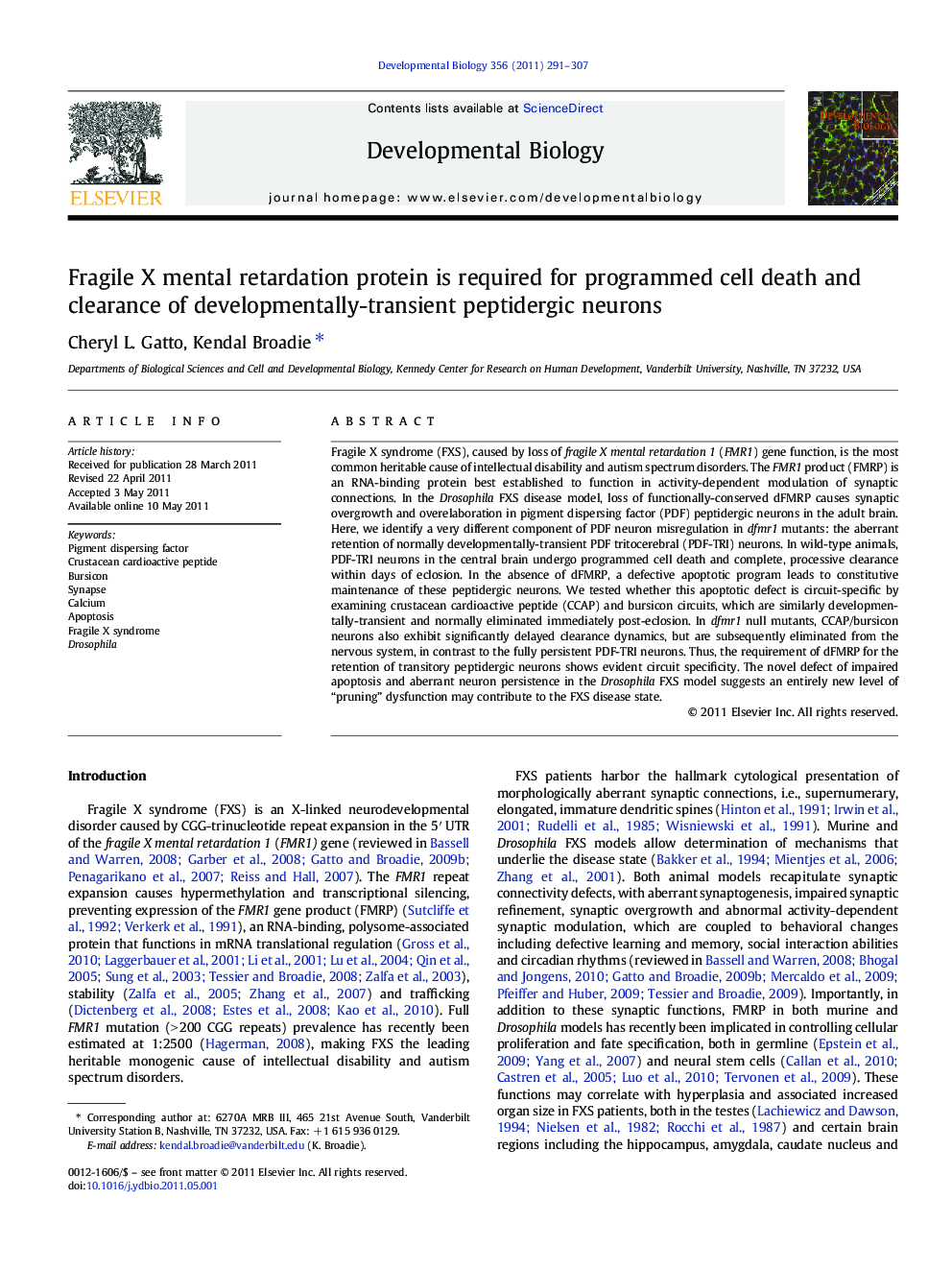| کد مقاله | کد نشریه | سال انتشار | مقاله انگلیسی | نسخه تمام متن |
|---|---|---|---|---|
| 2173557 | 1093737 | 2011 | 17 صفحه PDF | دانلود رایگان |

Fragile X syndrome (FXS), caused by loss of fragile X mental retardation 1 (FMR1) gene function, is the most common heritable cause of intellectual disability and autism spectrum disorders. The FMR1 product (FMRP) is an RNA-binding protein best established to function in activity-dependent modulation of synaptic connections. In the Drosophila FXS disease model, loss of functionally-conserved dFMRP causes synaptic overgrowth and overelaboration in pigment dispersing factor (PDF) peptidergic neurons in the adult brain. Here, we identify a very different component of PDF neuron misregulation in dfmr1 mutants: the aberrant retention of normally developmentally-transient PDF tritocerebral (PDF-TRI) neurons. In wild-type animals, PDF-TRI neurons in the central brain undergo programmed cell death and complete, processive clearance within days of eclosion. In the absence of dFMRP, a defective apoptotic program leads to constitutive maintenance of these peptidergic neurons. We tested whether this apoptotic defect is circuit-specific by examining crustacean cardioactive peptide (CCAP) and bursicon circuits, which are similarly developmentally-transient and normally eliminated immediately post-eclosion. In dfmr1 null mutants, CCAP/bursicon neurons also exhibit significantly delayed clearance dynamics, but are subsequently eliminated from the nervous system, in contrast to the fully persistent PDF-TRI neurons. Thus, the requirement of dFMRP for the retention of transitory peptidergic neurons shows evident circuit specificity. The novel defect of impaired apoptosis and aberrant neuron persistence in the Drosophila FXS model suggests an entirely new level of “pruning” dysfunction may contribute to the FXS disease state.
Research highlights
► Null dfmr1 mutants aberrantly retain normally transient PDF-TRI neurons.
► Null dfmr1 PDF-TRI neurons maintain synaptic contacts and remain functional.
► Null dfmr1 TRI-neurons persevere due to compromised apoptotic initiation.
► CCAP/bursicon neuron elimination is significantly delayed in dfmr1 nulls.
Journal: Developmental Biology - Volume 356, Issue 2, 15 August 2011, Pages 291–307